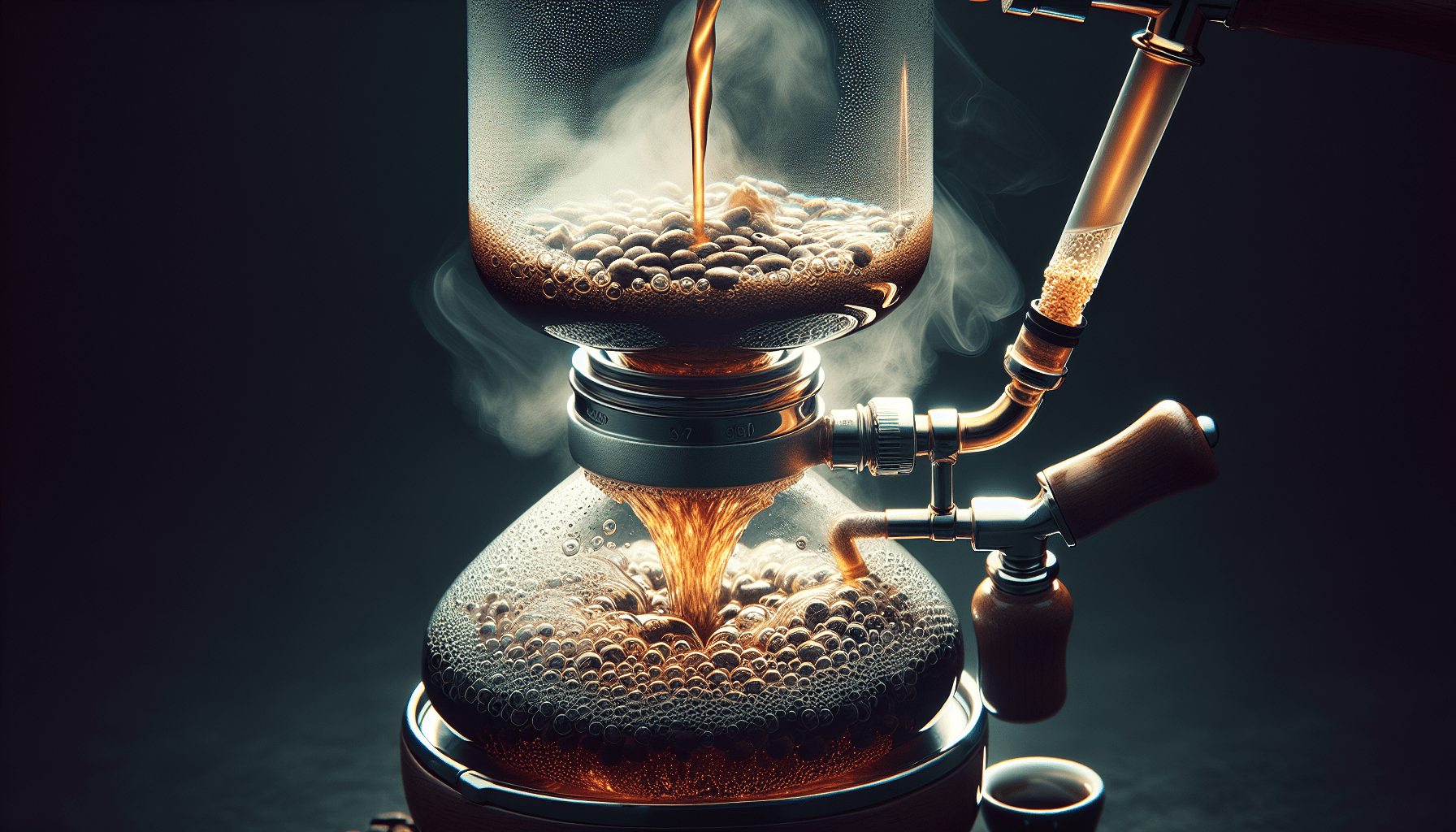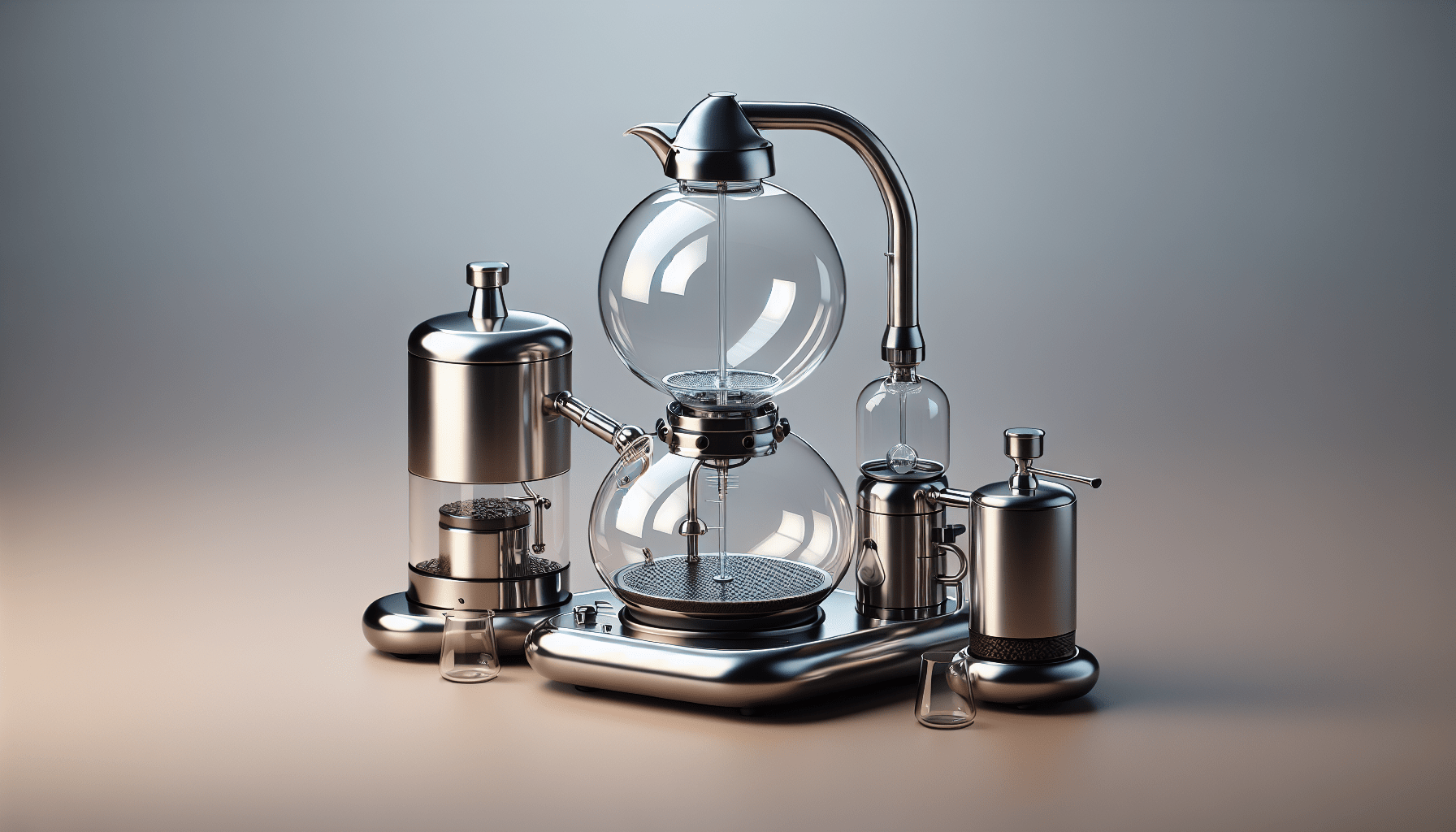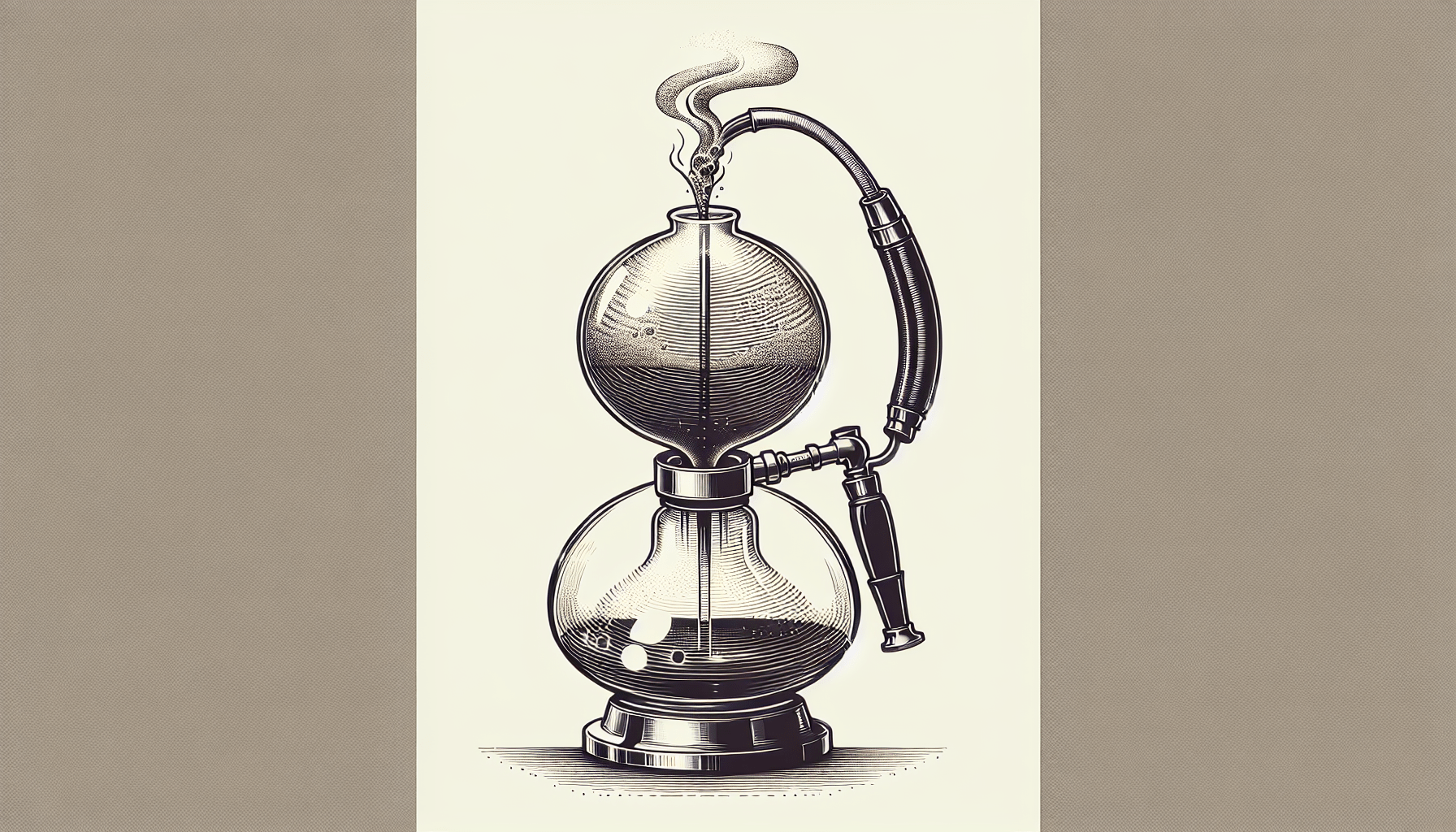Have you ever wondered about the fascinating history behind the siphon coffee maker? This unique brewing method dates back to the 19th century and has gained a cult-like following among coffee enthusiasts. From its origins in France to its popularity in Japan, this article will take you on a journey through time to uncover the captivating history of the siphon coffee makers. So grab a cup of your favorite brew and prepare to be amazed by the rich heritage of this beloved coffee-making device.
The Origins of Siphon Coffee Makers
Siphon Coffee Makers in the 19th Century
The history of siphon coffee makers dates back to the 19th century, commonly known as the Victorian era. This innovative brewing method was first introduced in France in the early 1800s and quickly gained popularity among coffee enthusiasts. At the time, coffee brewing methods involved boiling the coffee in a pot or using percolators, which often resulted in bitter and over-extracted flavors. The siphon coffee maker offered a new approach to brewing that focused on preserving the delicate flavors and aromas of the coffee beans.
Developments in the 20th Century
In the 20th century, siphon coffee makers underwent several developments that improved their design and functionality. One notable advancement was the introduction of the vacuum coffee maker, also known as a vacuum pot or vac pot. This variation of the siphon coffee maker utilized the principles of vapor pressure and vacuum to create a more efficient brewing process. The vacuum pot consisted of two chambers, one for water and one for coffee grounds, which were connected by a tube. As the water in the lower chamber heated up and vaporized, it created a partial vacuum that drew the brewed coffee back into the lower chamber, resulting in a cleaner and more flavorful cup of coffee.
Modern Siphon Coffee Makers
In recent years, siphon coffee makers have experienced a resurgence in popularity due to their unique brewing process and aesthetic appeal. Modern siphon coffee makers balance the traditional principles of siphon brewing with contemporary design elements to offer a delightful coffee experience. These coffee makers are often made from high-quality materials such as borosilicate glass, stainless steel, or ceramic, ensuring durability and heat retention. Additionally, advanced features like precise temperature control and customizable brew settings have made siphon coffee makers a favored choice among coffee enthusiasts who appreciate the art and science of brewing.
The Invention of Vacuum Coffee Makers
Principle behind Siphon Coffee Making
The principle behind siphon coffee making lies in the forces of pressure and vacuum, creating a unique brewing process that yields exceptional coffee. When heat is applied to the lower chamber of the siphon coffee maker, the water in the chamber heats up and generates steam. As the pressure builds, the steam forces the water to rise, traveling up through the tube into the upper chamber where the coffee grounds are placed. Once the heat source is removed, the steam condenses back into liquid form, creating a vacuum that pulls the brewed coffee back into the lower chamber, leaving behind the coffee grounds. This process results in a clean and smooth cup of coffee, as the vacuum prevents over-extraction and preserves the delicate flavors and aromas.
The Influence of Robert Napier
Scottish engineer Robert Napier played a significant role in the development and popularization of vacuum coffee makers during the mid-19th century. Napier, who was renowned for his contributions to industrial engineering, applied his expertise to create a more efficient coffee brewing method. By incorporating a separate heating chamber and a vacuum seal, Napier’s design improved the brewing process, ensuring a consistent and flavorful cup of coffee. His invention quickly gained recognition and became the precursor to the modern vacuum coffee makers we use today.
Popularization of Vacuum Coffee Makers
Following Robert Napier’s advancements, vacuum coffee makers gained popularity across Europe and the United States. The clean and visually captivating brewing process intrigued coffee enthusiasts, and the resulting coffee impressed with its rich flavors and aromatic characteristics. Vacuum coffee makers became the preferred choice for coffee connoisseurs, leading to their widespread adoption in coffeehouses and households alike. The popularity continued well into the 20th century, as manufacturers introduced various designs and improvements, catering to the evolving tastes and preferences of coffee lovers worldwide.
The Rise of Siphon Coffee Makers in Europe
Siphon Brewers in France
France played a vital role in the rise of siphon coffee makers in Europe. The country’s rich coffee culture and dedication to culinary excellence embraced the unique brewing method, and it quickly became an integral part of French coffee traditions. Siphon brewers were commonly found in cafes and restaurants, where baristas delighted customers with the mesmerizing sight of the brewing process. Coffee lovers in France appreciated the emphasis on flavor clarity, and siphon coffee makers became synonymous with a refined coffee experience.
The Proliferation of Siphon Coffee in Other European Countries
The popularity of siphon coffee in France soon spread to neighboring European countries. Coffee enthusiasts in countries like Belgium, Germany, and the Netherlands discovered the unique attributes of siphon coffee makers and sought to integrate them into their coffee cultures. The craftsmanship and precision required in siphon brewing resonated with European culture, where attention to detail and quality was highly valued. As a result, siphon coffee makers gained a strong foothold in Europe, captivating coffee lovers with their elegant design and exquisite brews.
The Expansion of Siphon Coffee Makers in Asia
Introduction of Siphon Brewing in Japan
While siphon coffee makers gained popularity in Europe, their journey extended to the Far East, specifically Japan. During the 20th century, Japan experienced a surge in coffee consumption, and the country’s coffee culture embraced various brewing methods. Siphon brewing, with its precise extraction and emphasis on flavor purity, aligned perfectly with the Japanese appreciation for precision and craftsmanship. Japanese coffee shops and businesses quickly embraced siphon coffee makers, showcasing their commitment to excellence and innovation in brewing techniques.
Siphon Coffee Culture in East Asia
The popularity of siphon coffee makers in Japan spread to other East Asian countries, including China, Taiwan, and South Korea. Each nation put its own unique twist on siphon brewing, incorporating local coffee beans and cultural traditions into the process. Siphon coffee makers became a centerpiece in specialty coffee shops across East Asia, attracting both locals and tourists who sought the extraordinary experience of savoring coffee brewed with meticulous precision. Today, siphon coffee continues to thrive in East Asia, with baristas and coffee enthusiasts pushing the boundaries of creativity and taste.
Siphon Coffee Today
Specialty Coffee Movements and Siphon Brewing
The specialty coffee movement of the 21st century has reinvigorated interest in alternative brewing methods, including siphon coffee making. Coffee enthusiasts and professionals alike are drawn to the unique characteristics of siphon-brewed coffee, appreciating its clean and nuanced flavors. Specialty coffee shops around the world have embraced siphon brewing as a way to elevate the coffee experience and showcase the distinctive attributes of single-origin beans. The meticulous attention to detail required in siphon brewing aligns perfectly with the values of the third wave coffee movement, where quality, sustainability, and craftsmanship are paramount.
The Advent of Modern Siphon Coffee Makers
With the resurgence of siphon brewing, manufacturers have introduced modern siphon coffee makers that combine the traditional principles with contemporary innovations. These new-generation coffee makers offer enhanced temperature control, precision timers, and adjustable brewing settings, allowing users to experiment with different brewing parameters and unlock the full potential of their coffee beans. Moreover, the design of modern siphon coffee makers has become an art form in itself, featuring sleek lines, transparent chambers, and visually captivating mechanics that elevate the brewing experience.
Siphon Coffee in Third Wave Coffee Shops
Third wave coffee shops, revered for their commitment to excellence and exploration of coffee flavors, have embraced siphon brewing as a captivating addition to their menu offerings. These coffee establishments prioritize sourcing high-quality beans, often from specific regions or single estates, and the intricacies of siphon brewing allows them to showcase the unique flavor profiles of these specialty coffees. Coffee connoisseurs who frequent third wave coffee shops can now indulge in the enchanting spectacle of siphon brewing, appreciating the craftsmanship and expertise that goes into every cup.
In summary, the history of siphon coffee makers spans centuries, witnessing their evolution from the early days of French siphon brewers to the modern, innovative designs seen in third wave coffee shops worldwide. The intricate balance of pressure and vacuum, introduced by Robert Napier, revolutionized coffee brewing and captured the hearts of coffee enthusiasts across Europe, Asia, and beyond. Today, siphon brewing continues to flourish, with its meticulous process and exceptional flavors attracting coffee lovers who seek a unique and refined coffee experience.




